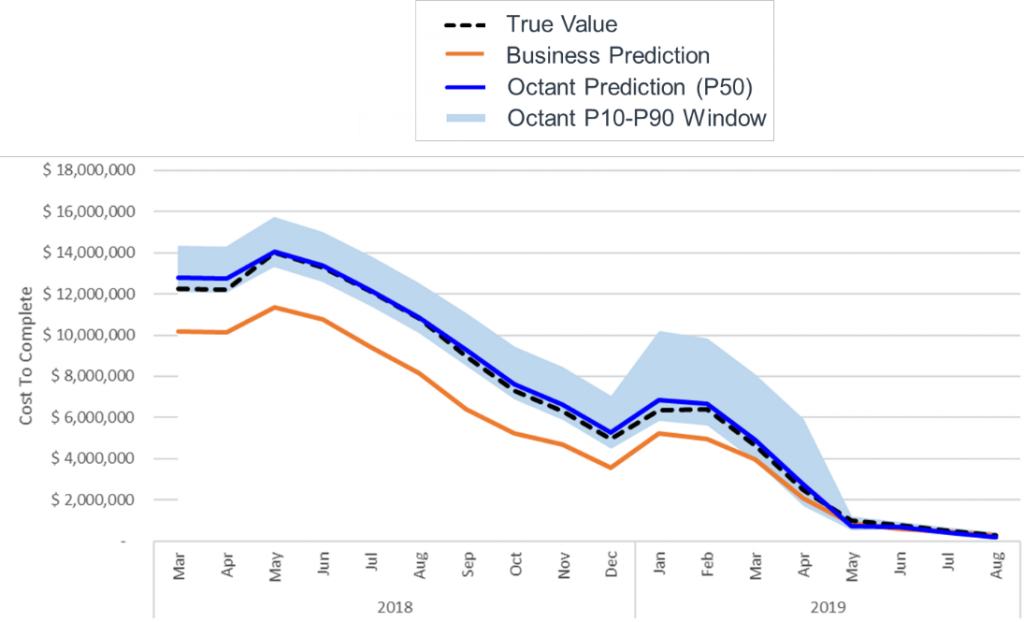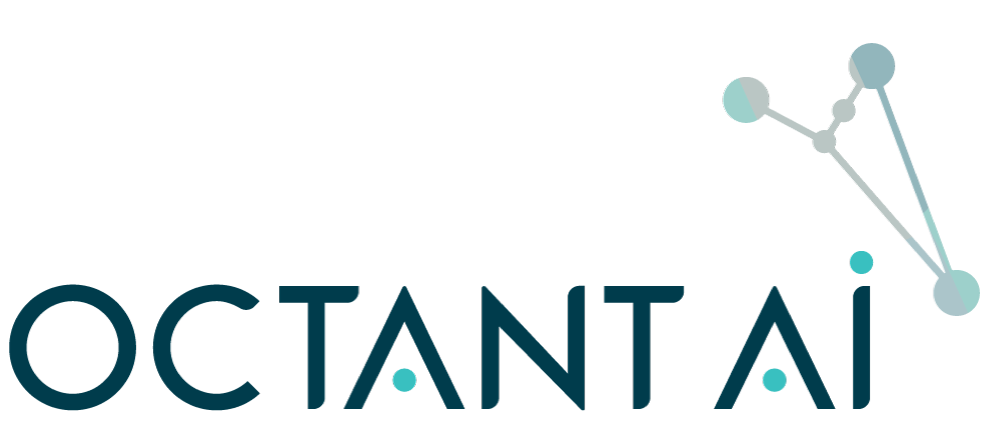Artificial Intelligence – Prediction in a Construction Environment
We have come to recognise that infrastructure projects run over time and budget. This point has been well documented by the University of Oxford based expert on mega-projects Professor Bent Flyvbjerg who maintains a global database of the performance of thousands of large projects (see Figure 1).

Figure 1 – Cost Overruns for various industrial Project Types. Adapted from (Flyvbjerg and Budzier 2019, 7)
The degree to which major projects run over time and budget are in proportion to their complexity. Noting that humans do not deal with complexity well, but artificial intelligence can, there is significant untapped value derived from humans working with AI to achieve enhanced levels of performance, a fact identified by the CSIRO’s Data 61 in its recent report, Artificial Intelligence Roadmap.
The Artificial Intelligence Roadmap states that “AI will continue to collide with other technologies and elevate our human knowledge and human capability to new levels.”
This highlights firstly, that there is a demonstrable case for adopting AI technologies to derive better outcomes; and also, that this technology is commercially available now.
BMD Urban has been collaborating over the last 18 months with Australian-based technology firm Endeavour Programme to implement its artificial intelligence technology, Octant AI, to predict final cost outcomes across its projects. BMD Urban has an annual turnover of $450m and on average has between 70 and 80 live projects at any one moment. This collaboration has provided strong evidence to demonstrate the significant business benefits Octant AI can provide in its ability to accurately predict outturn cost earlier than traditional methods are capable of achieving. Such early warning provides the business with opportunities to deploy targeted resources for early intervention at less cost, essentially providing a framework to improve commercial outcomes and mitigate inevitable commercial detriment of distressed projects.
The Background of Octant AI
The technology behind Octant AI was refined at the University of Oxford by Technical Director Cuong Quang. Using his research, Endeavour Programme and BMD Urban are now successfully implementing Octant AI with encouraging results.
Detailed testing conducted by Dr. Chris Bartley, specialist in machine learning, on the Octant AI has validated earlier findings about the accuracy of the technology. Dr. Bartley has further refined and tested separate models which provide similar performance using typical project reporting data. This latest development lowers the barriers of adoption and makes the current product very accessible to clients. Durations for on-boarding new clients has significantly reduced over the past 6 months with Octant AI now fully cloud based on Amazon Web Services providing scalability of deployment in a secure environment.
Octant AI uses historical business data and machine learning techniques to establish reference class information (in the BMD instance up to 200 million data points). Using this reference class, Octant is able to sense patterns in the data relating to actual historical outcomes and provides accurate predicted outturn cost for comparable projects.

Figure 2: Comparison of Portfolio performance for Business FFC and Octant AI predicted Out-turn cost.
In recent testing of Octant AI with BMD Urban, the technology demonstrated the following benefits:
- more accurate predictions and value over the first 60% of program duration.
- reliable warning of cost overruns (30% of program duration earlier) with up to 80% precision.
- Improved portfolio forecasting accuracy, circa 20% more accurate in predicting actual business results.
Whilst it is difficult to cut the umbilical on traditional methods in the face of new technologies, other industries such as health and finance, have already evolved and benefited from embracing these changes. History and evidence suggest that similar results will flow to those who adopt these advances and emerging technologies in the construction industry.



